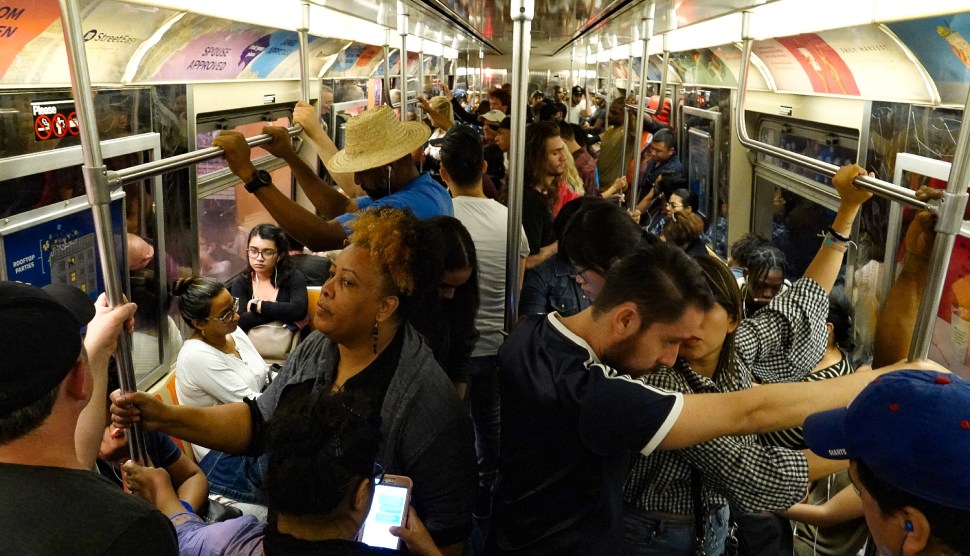
The D Train at rush hour in the Before Times.Kevin Drum
As we all know, Black Americans get infected with the coronavirus at far higher rates than the white population. Part of the reason is that Black people tend to have high levels of preexisting conditions like diabetes and high blood pressure, which make them more vulnerable to COVID-19. Another part of the reason is that Black neighborhoods tend to have fewer medical resources than white neighborhoods—and thanks to historical patterns of systemic racism, this remains true even when you compare neighborhoods with comparable income levels. In studies of otherwise similar Black and white neighborhoods, Black neighborhoods still don’t have either the quantity or quality of medical care that’s common in white neighborhoods.
But is there more? A new study says yes. The authors say that if you control for education, occupation, and commuting patterns, the racial disparities in COVID-19 infections largely disappear for Latino and Asian populations. However, among Black and Indigenous populations, big differences remain. What’s the missing factor?
Surprisingly, for these two groups the racial disparity does not seem to be due to differences in income, poverty rates, education, occupational mix, or even access to healthcare insurance, which has been hypothesized by many observers to be a key source of the disparity. A significant portion of the disparity can, however, be sourced to the use of public transit, which also explains a large fraction of the difference in mortality between Los Angeles and New York City.
¹³One might wonder if the public transit variable is simply functioning as a proxy for New York City. Only four counties in the US show a majority of workers getting to work by public transit, and they are all part of New York City. Dropping these from the data barely changes the result. It is still possible that public transit is a proxy for effective local density, a variable emphasized by Desmet and Wacziarg (2020).
Even more than usual, I’d caution everyone to take this result as tentative. It’s a population study, and population studies have inherent limitations. What’s more, there are several variables the authors had to estimate, and the data at hand limits the accuracy of those estimates. (For a deeper dive into the data, see my colleagues Sinduja Rangarajan and Eddie Rios’ analysis.)
Instead, this should be taken as a pointer: It seems likely that mass transit is a factor, and that means mass transit deserves further study. It should also be taken as a success story for science and genuine curiosity. When we take a look at things like COVID-19 infections, it’s important not to jump to vague conclusions based on preexisting beliefs. We need to test those beliefs, because when we do we might discover factors that we can do something about right away, even in the absence of broad social reforms that might take a lifetime to achieve. If mass transit is really a crucial variable, I’m still not sure what the immediate answer is. But at least we can start looking.














